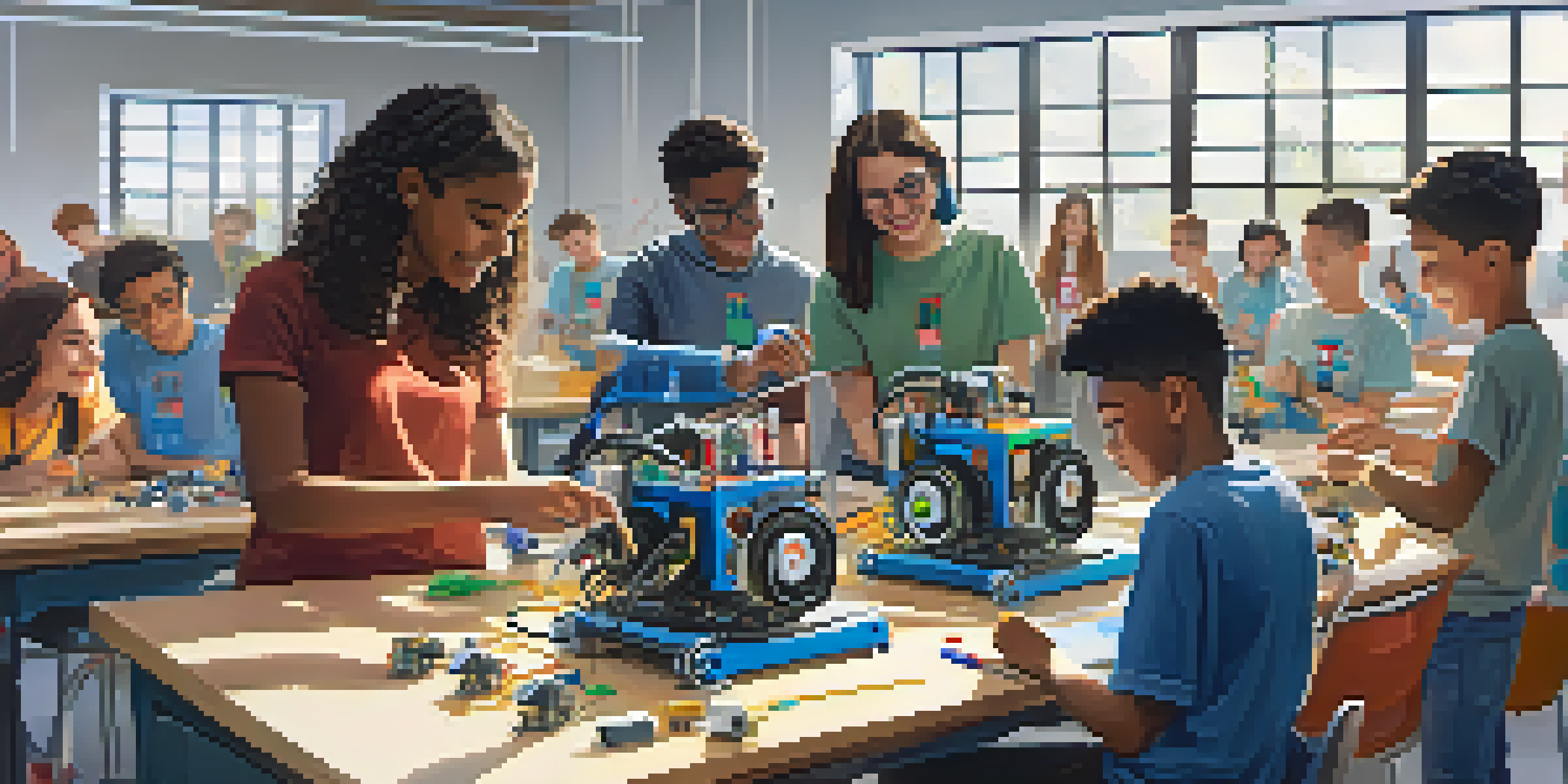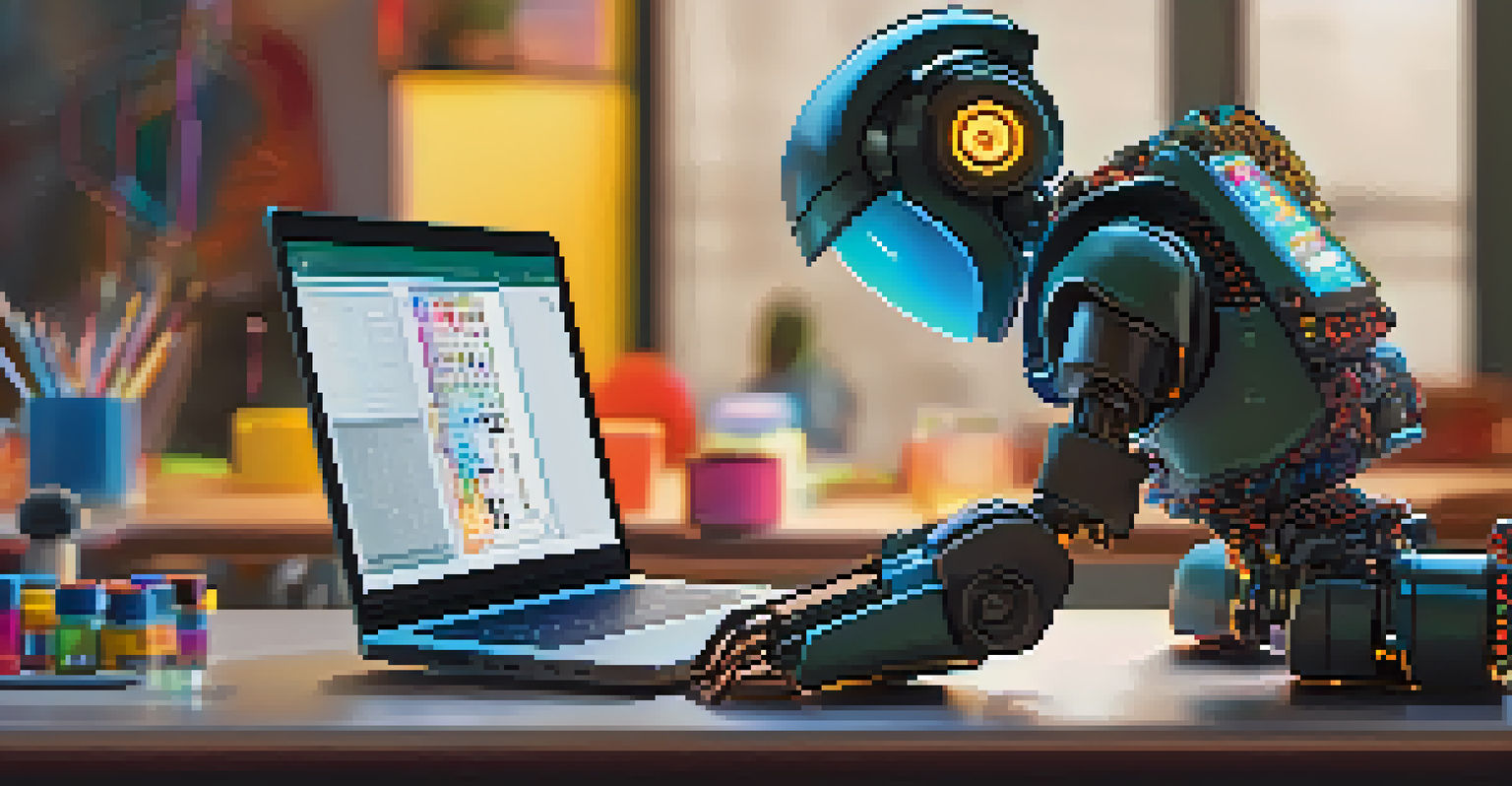The Role of Robotics in Engaging Students with STEM Learning

Understanding the Importance of STEM Education
STEM education, which stands for Science, Technology, Engineering, and Mathematics, is essential for equipping students with critical skills for the future. In today’s tech-driven world, understanding these subjects can open doors to numerous career paths. However, engaging students in these areas can sometimes be a challenge, which is where innovative approaches come into play.
Robotics is the ultimate tool for teaching students how to think critically and work collaboratively.
Robotics serves as a practical application of STEM concepts, making learning interactive and hands-on. When students build and program robots, they are not just learning theory; they are applying their knowledge to solve real-world problems. This experiential learning fosters curiosity and motivates students to explore further.
Moreover, STEM skills are not just about technical knowledge. They also encompass problem-solving, creativity, and collaboration. By integrating robotics into the curriculum, educators can provide a comprehensive STEM experience that prepares students for future challenges.
How Robotics Captivates Student Interest
Robotics engages students by merging play with education. When students interact with robots, they often see learning as a fun, exciting adventure rather than a chore. This gamified aspect of robotics inspires students to participate actively and enthusiastically.

Consider a scenario where students program a robot to navigate a maze. The thrill of seeing their code come to life captures their attention and ignites their passion for learning. Such hands-on experiences create lasting memories and foster a positive attitude toward STEM subjects.
STEM Skills Through Robotics
Robotics engages students in hands-on learning, enhancing their understanding of STEM concepts while developing critical problem-solving and collaboration skills.
Additionally, robotics competitions and clubs offer students a sense of community and belonging. Working alongside peers on group projects encourages teamwork and communication, vital skills in any field. This collaborative environment further enhances the appeal of STEM education.
Developing Critical Thinking Skills Through Robotics
One of the most significant benefits of robotics in STEM education is the development of critical thinking skills. When students encounter challenges while programming or designing robots, they must think analytically to find solutions. This process of trial and error teaches resilience and persistence.
STEM education is not just about formulas and equations; it's about creativity and innovation.
For instance, if a robot fails to complete a task, students must analyze the problem systematically. They learn to break down complex issues into manageable parts, fostering a mindset geared towards problem-solving. Such skills are not only valuable in STEM fields but are applicable in everyday life.
Moreover, robotics encourages students to ask questions and seek answers independently. This inquisitive nature is at the heart of scientific exploration and innovation, helping students become lifelong learners.
Encouraging Creativity and Innovation Through Robotics
Robotics also serves as a canvas for creativity and innovation. Students are not just consumers of knowledge; they become creators, designing their own robots and solutions. This creative freedom allows them to express their ideas and think outside the box.
For example, a project might involve creating a robot that can sort recyclable materials. Students must brainstorm innovative designs and functionalities, which encourages them to apply their STEM knowledge in practical, creative ways. This process reinforces the idea that STEM is not just about formulas and equations but also about imagination and ingenuity.
Fostering Creativity in Education
Robotics allows students to express their creativity by designing and building their own projects, bridging the gap between technical knowledge and imaginative thinking.
Additionally, robotics projects often require students to consider user experience and design principles. This intersection of engineering and creativity prepares students for various careers, including those in design and technology.
Fostering Collaboration and Teamwork with Robotics
Robotics inherently promotes collaboration and teamwork, essential components of both STEM education and the modern workplace. Students often work in groups to tackle projects, fostering a sense of community and shared responsibility. This collaborative environment cultivates social skills and enhances learning outcomes.
For instance, during a robotics competition, students must communicate effectively to strategize and troubleshoot. They learn to value diverse perspectives and skill sets, understanding that collective efforts lead to better solutions. This experience mirrors real-world scenarios, preparing them for future success.
Furthermore, team-based robotics projects often highlight the importance of leadership. Students naturally take on different roles, allowing them to discover and hone their leadership styles. This dynamic not only makes learning more enjoyable but also equips students with essential life skills.
Bridging the Gender Gap in STEM with Robotics
One of the exciting aspects of robotics is its potential to bridge the gender gap in STEM fields. Traditional perceptions often discourage girls from pursuing STEM careers, but robotics provides a platform for equal participation. Many initiatives focus on engaging girls in robotics, fostering interest and confidence in STEM.
By showcasing relatable role models and creating inclusive environments, programs can inspire girls to explore robotics. For example, female mentors and educators can play a pivotal role in demonstrating that girls can excel in technology and engineering. This representation is crucial for encouraging young women to pursue these fields.
Bridging the Gender Gap
Robotics initiatives create inclusive environments that encourage girls to pursue STEM fields, showcasing role models and fostering confidence in technology and engineering.
Moreover, robotics competitions often involve diverse teams, promoting a sense of belonging among all participants. This collaborative spirit helps break down stereotypes and demonstrates that STEM is for everyone, regardless of gender.
The Future of Robotics in STEM Education
As technology continues to evolve, so does the role of robotics in education. The integration of artificial intelligence and machine learning into robotics presents exciting new possibilities for STEM learning. Students can engage with more advanced technologies, preparing them for future careers in an increasingly digital world.
Schools and educational institutions are beginning to recognize the importance of incorporating robotics into their curricula. By investing in robotics programs, they can provide students with the skills and knowledge necessary to thrive in future job markets. This shift reflects a broader trend towards experiential learning and hands-on education.

Ultimately, the future of robotics in STEM education is bright. As we continue to innovate and adapt, robotics will remain a vital tool for engaging students, fostering creativity, and preparing them for a complex, technology-driven world.